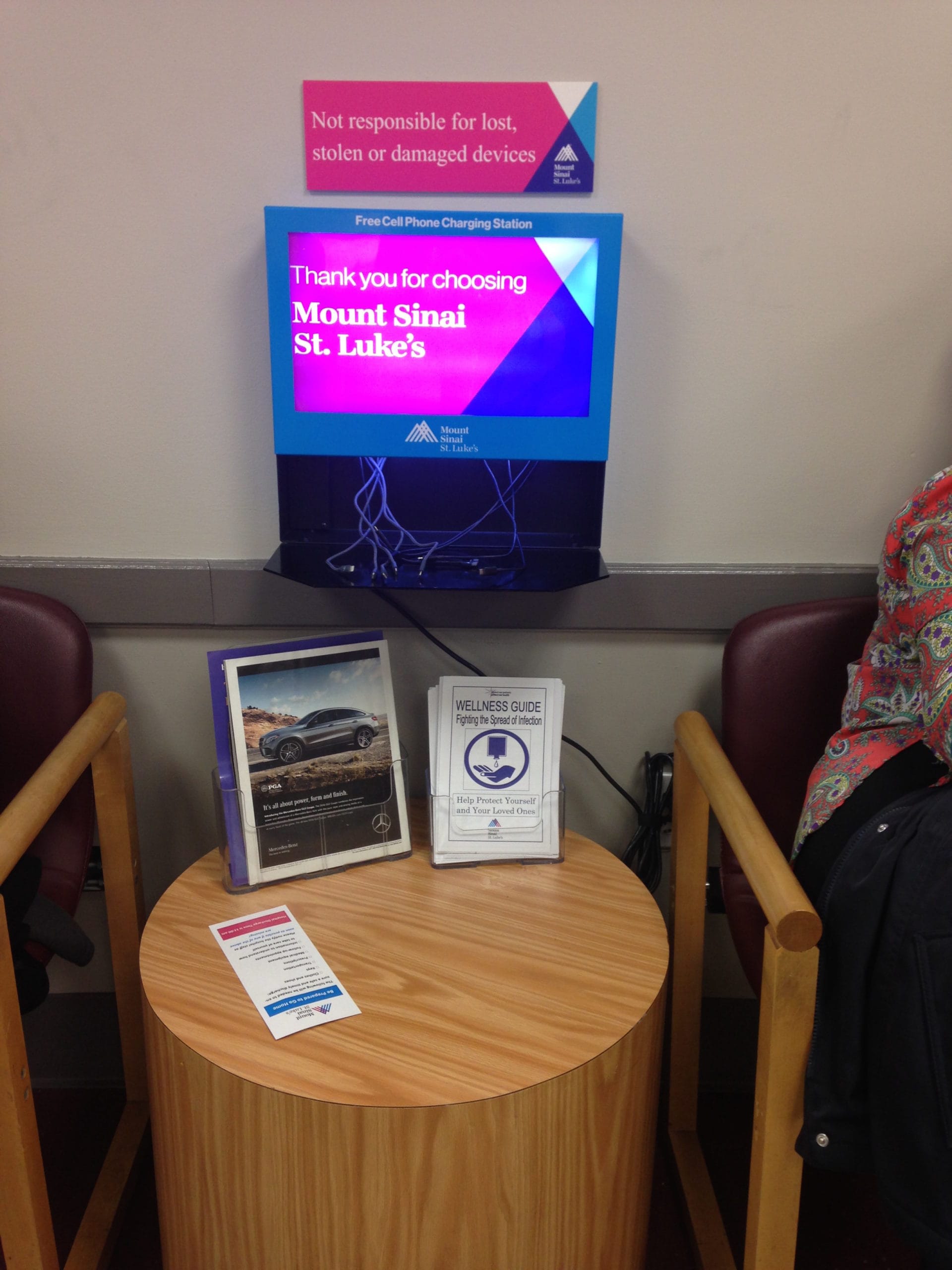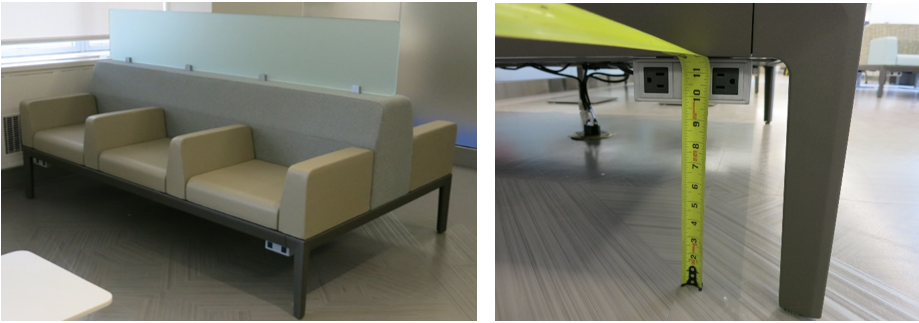

Blog
Whether it’s keeping family posted, getting work done, or streaming music or videos to help the time pass, the ability to stay connected and charged can relieve some of the stress that often comes with hospital visits.

“Trends in Healthcare” is a recurring series that focuses on exciting new designs and technologies we’re seeing in healthcare projects and provides best practices on how to ensure that these latest trends are accessible to persons with disabilities. We build on the wealth of knowledge we gain from working with healthcare design teams, construction crews, and practitioners to provide practical solutions for achieving accessible healthcare environments.
Anyone who has ever had to take a trip to the hospital knows how much time is often spent in the waiting room. As a result, our experience in that space can shape our perception of the entire visit. In fact, studies have shown that a visitor’s impression of the waiting room itself contributes significantly to the likelihood of a return visit. The length of wait times can vary – from a relatively short wait for a screening, to an average of 40 minutes in emergency departments, to the better part of a day if you are waiting for a family member to receive treatment. As healthcare providers strive to remove pain points within the patient experience, they are turning to a number of design strategies to help create a more pleasant waiting room experience. One of these strategies is to ensure that patients and visitors have access to electrical outlets.
Whether it’s keeping family posted, getting work done, or streaming music or videos to help the time pass, the ability to stay connected and charged can relieve some of the stress that often comes with hospital visits. As healthcare providers acknowledge the benefits of providing charging areas, our consultants have encountered several common design strategies used to incorporate outlets into waiting rooms. They can come in the form of standard power outlets with integrated USB ports, designated phone charging stations with cables to support various devices and seating with built-in charging outlets. When adding these features to your design, it is important to remember that a charging station is an amenity that must be accessible for all visitors. If the battery is low on your cell phone or laptop, the last thing you want to think about is whether or not you can access the outlets.

Designers must consider the following criteria when installing accessible charging stations:

The placement of wall-mounted charging stations and outlets integrated into furnishings can make them inaccessible. Charging stations are sometimes incorporated after a department is operational and vendors have to work with existing layouts to determine a mounting location. Where locating above side tables, it is best practice to ensure that the reach depth to the charging cables is a maximum of 24 inches and the height of the cables are a maximum of 46 inches AFF. Where side tables are deeper than 24 inches, it is best to find another location to mount the charging stations.
When selecting seating with integrated outlets, be sure to specify furnishings with outlets at least 15 inches AFF to ensure access. By selecting specifications that meet the reach range criteria, it saves the hassle of having to redo purchases and reconfigure seating layouts.

Incorporating convenience outlets in waiting rooms is just one of the many ways in which healthcare providers are improving the overall patient and visitor experience.
Tune in for our next “Trends in Healthcare” post, as we examine the steps to ensure that the biophilic benefits of incorporating communal plazas are enjoyed by all.
Learn more about SWA’s services for the healthcare sector here!
Contributor: Jennifer C. Low, Accessibility Consultant
Peter Stratton